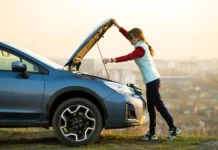Drunk driving is a grave menace that poses a substantial threat to the safety of our roads, endangering not only the intoxicated driver but also innocent lives. It is a reckless act that can have devastating consequences. Recognizing the signs of drunk driving is paramount in identifying potential risks on the road and responding appropriately to mitigate these dangers. By remaining vigilant and alert, we can contribute to the creation of safer roads and prevent tragic accidents from occurring.
Being able to identify the signs of drunk driving empowers us to take timely and decisive action. By paying attention to certain cues, we can potentially save lives and prevent catastrophic incidents.
How to recognize a drunk driver?
Erratic and Inconsistent Driving

One of the most evident signs of drunk driving is erratic and inconsistent driving behavior. Intoxicated drivers may exhibit sudden and unexplained lane weaving, swerving, or drifting. Their speed may fluctuate, with abrupt accelerations or decelerations that are inconsistent with traffic flow. These erratic movements indicate compromised motor control and impaired judgment.
Slow Reaction Times
Impaired reflexes and delayed reaction times are common effects of alcohol consumption. If you notice a driver reacting slowly to traffic signals, such as delayed starts or hesitant stops, it could be an indication of drunk driving. The inability to respond quickly to changing road conditions significantly increases the risk of accidents.
Tailgating and Improper Lane Changes
Drunk drivers often display poor judgment and a lack of spatial awareness. They may tailgate other vehicles closely or make abrupt and unsafe lane changes without using turn signals. These reckless behaviors endanger themselves and others on the road, increasing the likelihood of rear-end collisions or sideswipes.
Inconsistent Speeding

While speeding is a dangerous behavior, inconsistent speeding is a common sign of drunk driving. Intoxicated drivers may alternate between driving significantly below or above the speed limit without any reasonable explanation. Rapid and unpredictable speed variations can lead to unexpected reactions from other drivers, resulting in potential accidents.
Straddling Lane Markings
Drunk drivers may have difficulty maintaining their position within the designated lane. They might straddle or repeatedly cross lane markings without making proper corrections. This lack of lane discipline demonstrates impaired judgment, compromised motor skills, and a higher probability of veering into adjacent lanes or causing head-on collisions.
Frequent Braking or Stopping
Intoxicated drivers often exhibit excessive or unnecessary braking, even in situations where it is unwarranted. They might stop suddenly without any apparent reason, posing a hazard to vehicles behind them. This behavior can be a strong indicator of impaired decision-making and impaired cognitive abilities.
Erratic Use of Headlights

Pay attention to drivers who exhibit erratic use of headlights, such as forgetting to turn them on during nighttime or failing to switch from high beams to low beams when approaching oncoming traffic. These lapses in basic driving etiquette can indicate impaired judgment and diminished cognitive functioning due to alcohol consumption.
Driving at Inappropriate Times
Drunk drivers may choose to drive during unusual hours, such as late at night or early in the morning. This preference for unconventional driving times is often an attempt to avoid increased law enforcement presence on the roads. If you observe a vehicle exhibiting signs of impairment during these odd hours, it is crucial to report it to the authorities immediately.
What to do if you spot a drunk driver?
If you spot a drunk driver on the road, it’s essential to take immediate action to ensure the safety of yourself and others. Here’s what you can do:
- Maintain a safe distance: Keep a safe distance from the vehicle displaying signs of drunk driving. This will help minimize the risk of a potential accident and provide you with more time to react if your driving becomes more unpredictable.
- Do not engage or confront: Avoid engaging or confronting the driver directly. It’s important to prioritize your safety and not escalate the situation. Instead, focus on alerting the appropriate authorities.
- Note important details: Take note of essential information that can assist law enforcement. This includes the vehicle’s make, model, color, and license plate number. Remember any distinct features or signs of impairment displayed by the driver.
- Do not attempt to follow: Refrain from following the intoxicated driver yourself. This can be dangerous and increase the risk of further incidents. Let the authorities handle the situation.
- Report to the authorities: Contact the local police or emergency services immediately to report the drunk driver. Provide them with the information you gathered, including the location, direction of travel, and any observable signs of impairment. Follow their instructions and cooperate fully.
- Be a witness if necessary: If law enforcement arrives at the scene, be prepared to provide a statement as a witness. Describe the behavior you observed and any actions taken to ensure road safety. Your account can help support any legal action against the drunk driver.
Remember, it is crucial to prioritize safety and allow trained professionals to handle the situation.
Tips to avoid drunk driving

If you find yourself in a situation where you have consumed alcohol and are considering driving, it is crucial to prioritize safety and make responsible choices. Here are some tips to keep in mind:
- Plan ahead: Make transportation arrangements in advance, like designating a sober driver, using public transportation, or arranging a ride-sharing service or taxi.
- Use alternative transportation: Choose safer options if you’ve been drinking, such as calling a friend, using public transportation, or finding nearby accommodations until you’re sober.
- Seek help: If tempted to drive under the influence, reach out to a sober friend, taxi service, or helpline for assistance.
- Prepare for events: If alcohol will be served, plan transportation in advance to eliminate the temptation to drive impaired.
- Take responsibility: Understand the severe consequences of drunk driving and prioritize the safety of yourself and others on the road.
- Educate yourself: Learn about the risks and repercussions of drunk driving to make informed decisions and prioritize safety for everyone.
Conclusion
Recognizing the signs of drunk driving is crucial in maintaining road safety and preventing accidents caused by impaired drivers. Erratic and inconsistent driving behavior, slow reaction times, tailgating, improper lane changes, inconsistent speeding, straddling lane markings, frequent braking or stopping, erratic use of headlights, and driving at inappropriate times are all red flags that can indicate the presence of an intoxicated driver.
If you suspect someone is driving under the influence, it is essential to prioritize safety by maintaining a safe distance, avoiding confrontation, and promptly reporting the situation to law enforcement.









